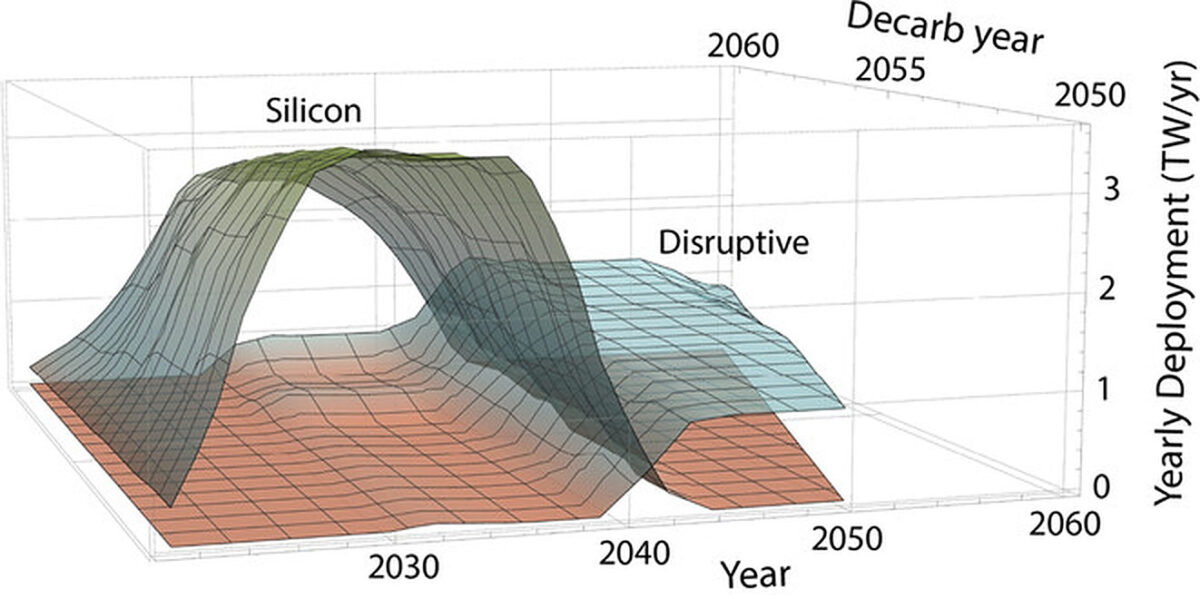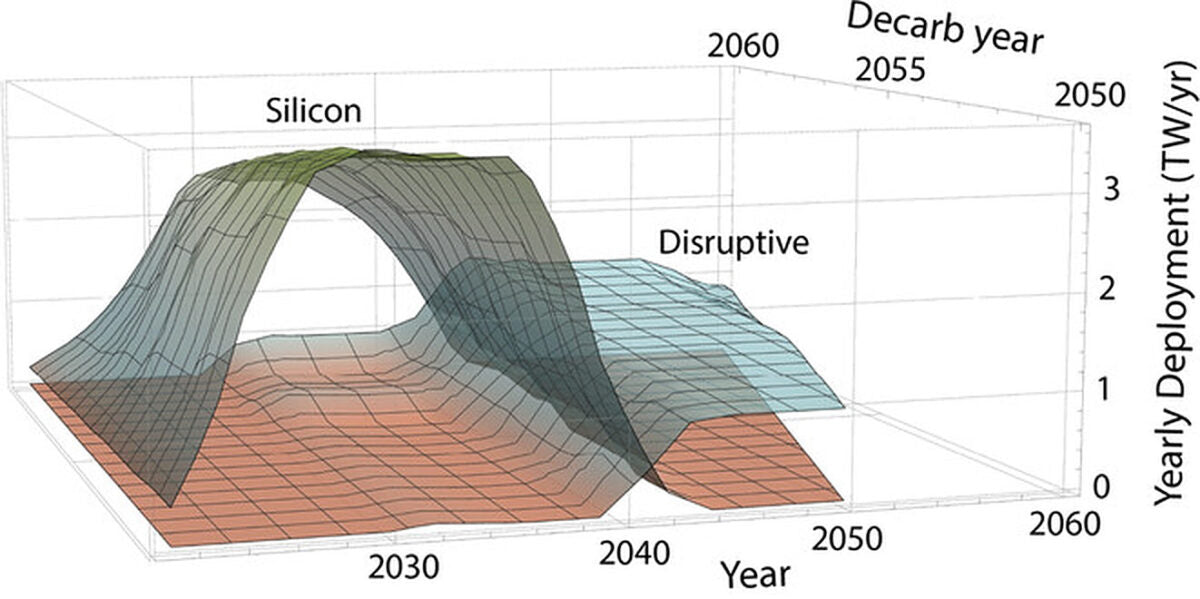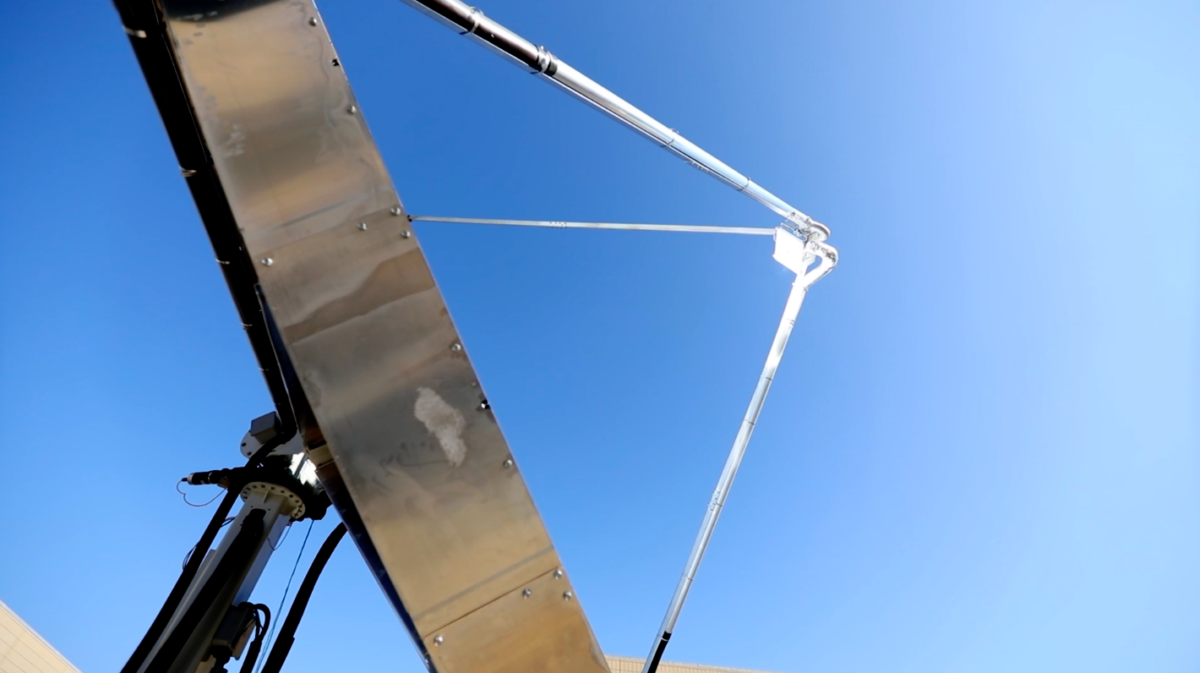https://www.pv-magazine.com/2023/05/08/the-world-can-manufacture-enough-solar-to-reach-decarbonization-goals/
The world can manufacture enough solar to reach decarbonization goals

PV deployment rate for silicon and prospective disruptive technologies as a function of decarbonization year
Image: NREL, RRL Solar, Creative Commons License CC BY 4.0
From pv magazine USA
Over 100 countries have pledged to be carbon neutral by 2050, according to the United Nations. A recent study conducted by researchers at the U.S. National Renewable Energy Laboratory (NREL) found that to totally decarbonize global electrical systems using solar in the 2050 to 2060 decade, the world would need to install 63.4 TW of PV. The findings of the study are published in “Photovoltaic Deployment Scenarios Toward Global Decarbonization: Role of Disruptive Technologies,” which appears in the journal Solar RRL.
The researchers modeled viable trajectories to supply > 60 TW of installed solar capacity to meet the goal of global decarbonization and studied the effect of a disruptive technology on deployment cost and market opportunity. They concluded that it is possible for production to scale up to the 2.9 TW to 3.7 TW needed per year within 10 to 15 years, a goal that will cost from $600 billion to $660 billion. The model includes using existing technology as well as mature technologies using silicon and CdTe. The study estimates that disruptive technologies offer a $1 to $2 trillion market opportunity and that the potential for cost savings could amount to hundreds of billions of dollars.
The disruptive technologies include cadmium telluride (CdTe)-based PV, perovskites and tandem technologies. CdTe, which is the technology used by solar manufacturers First Solar and Toledo Solar, among others, currently represents about 16% of the U.S. solar market, NREL reports. Perovskites have challenges with long-term durability, but they offer advantages in manufacturing because they can be printed quickly and relatively inexpensively in a roll-to-roll method. Tandems pair technologies, such as perovskite on silicon, and several companies are beginning to manufacture tandems including TandemPV, CubicPV and OxfordPV.
According to NREL, tandem devices and minimodules are seeing efficiencies of as much as 31.25%. And while the efficiencies are promising, and other tandems continue to be developed, R&D is still needed in order for these devices to be manufactured at the scale needed to achieve terawatt capacities.
“There are economically viable trajectories that get to the needed manufacturing capacity to produce the amount of PV needed to completely decarbonize the world’s energy economy,” said Jao van de Lagemaat, director of the Chemistry and Nanoscience Center at the U.S. Department of Energy’s NREL. “Emerging technologies could potentially lower the cost of this deployment significantly if they get commercialized in time.”
Popular content
To provide enough solar over the next two decades to decarbonize the global electrical system will require an “unprecedented ramp-up of production capacity”, but it is achievable, according to the NREL analysis.

The estimated target of 63.4 TW needed between 2050 and 2060 is a 60-fold increase in the amount of installed PV worldwide today. When the researchers say this is possible, it is under the assumption that investors protect their investments by avoiding stranded production assets. The model demonstrates that a sustainable ramp-up of manufacturing is possible, and that disruptive technologies will play a role in lowering capital costs.
Another assumption is that the lifespan of a PV module will increase considerably, possibly from an average of 30 years in 2020 to 50 years by 2040.
Looking beyond the 2050 to 2060 decade, van de Lagemaat, noted that module retirement and population growth will be the drivers of a “relatively modest demand” after global decarbonization is reached.
In addition to van de Lagemaat, the other authors are Michael Woodhouse from NREL and Billy Stanbery from Colorado School of Mines. NREL’s internal Laboratory Directed Research and Development program funded the research.
This content is protected by copyright and may not be reused. If you want to cooperate with us and would like to reuse some of our content, please contact: editors@pv-magazine.com.




